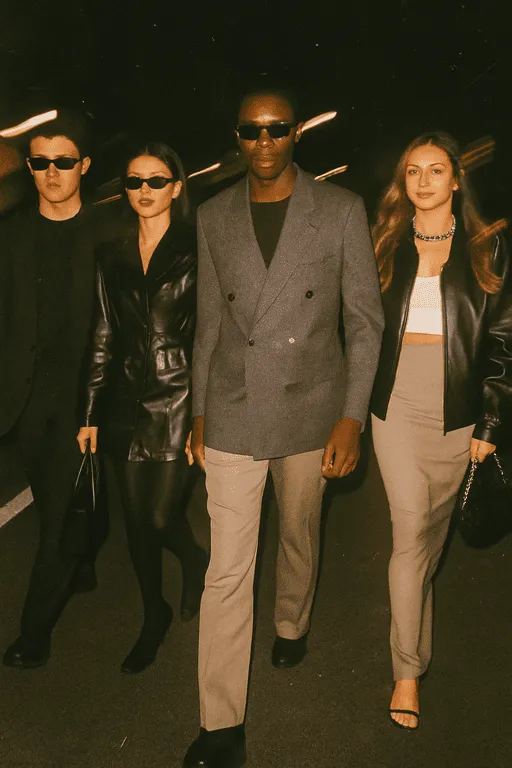Let’s face it—being original is overrated.
In a world obsessed with creating the next big thing, we’ve been tricked into believing that success requires reinventing the wheel. But here’s what Seth Godin—the Godfather of Marketing himself—wants you to know: it doesn’t. You don’t need a revolutionary idea. You don’t need to go viral. You don’t need to hustle your way to burnout.
What you need… is to be remarkable.
Not loud. Not flashy. Just truly, deeply, authentically worth talking about.
Seth Godin, the guy whose blog has a million readers, who doesn’t use Instagram, Facebook, or TikTok, and yet still spreads ideas like wildfire. We talked marketing. We talked business. We talked about what it really takes to build something that matters in 2025.
This isn’t just another business blog. This is a masterclass from the man who redefined what marketing even means.
Let’s get into it.
1. Stop Playing the Algorithm Game
You know what’s scarier than a saturated market?
A saturated market filled with mediocre stuff.
That’s the real problem. Not that everyone’s on Instagram. Not that TikTok is flooded. The problem is that we’ve mistaken visibility for value. And we’ve convinced ourselves that the only way to be successful is to “hack” attention.
But Seth’s take? That’s noise. That’s hustle. That’s spam.
“There are people who open a little tiny pizza shop and there’s a line around the block—not because they’re good at TikTok, but because they made a pizza that was worth people putting on TikTok.”
Let that sink in.
If you need 40 million views just to make $200, you don’t have a marketing strategy—you have a math problem.
2. Marketing Isn’t What You Think It Is
Billboards. Ads. Popups interrupting your YouTube video. That’s not marketing.
That’s distraction. And we’re drowning in it.
Real marketing? It’s the art of creating the conditions for your idea to spread. And not by forcing it down people’s throats, but by giving them something they want to talk about.
If you’re interrupting people, chasing followers, or selling average products to average people, Seth has one thing to say:
“I can’t help you.”
Brutal? Maybe. Necessary? Absolutely.
3. Create Something Worth Talking About
Here’s the golden question:
Is what you’re creating worth talking about?
Think of Apple. Facebook. Google. Think of that local pizza joint. Think of your favorite artist. What do they have in common?
They didn’t run ads at first. They didn’t shout the loudest. They made something so remarkable, people couldn’t help but share it.
Being “worth making a remark about” is your shortcut. It’s your growth hack. And it’s harder than it sounds.
Because it means doing the real work. The scary work. The kind of work that might fail.
But if you’re not making something people would miss if it disappeared tomorrow, why are you even making it?
4. Tell a Better Story
Everyone says storytelling matters. But what does that actually mean?
It means tension. It means connection. It means showing your audience who they are, not just what your product does.
“You don’t need to learn how to tell stories—you already do. You invite friends to dinner. You get them to show up. That’s storytelling.”
The problem isn’t that you don’t know how to tell a story. The problem is you’re too scared to tell the real one.
You’re afraid to be seen. Afraid to be judged. Afraid to put something out there and be told it’s not enough.
But here’s the thing: the stories that work are the ones that matter. The ones rooted in truth. The ones that create emotion, identity, and trust.
5. The Five-Step Marketing Framework
If there’s a blueprint for doing this right, it’s this:
Step 1: Invent a Thing Worth Making
And don’t overthink it. Originality is overrated. Instead, find a proven model. What matters is the story, the contribution, and the community that forms around it.
Step 2: Design It for a Few People Who Truly Care
Stop trying to please everyone. Focus on the smallest viable market. The few who need what you offer so badly, they’ll tell others when they find it.
Step 3: Tell a Story That Matches Their Dreams
Don’t try to change people. Step into their worldview. Reinforce the story they already believe. Make your brand a mirror, not a megaphone.
Step 4: Create Conditions for the Word to Spread
You don’t spread the word—your customers do. Give them something that enhances their status, affiliation, or identity when they talk about you.
Step 5: Show Up Consistently and Generously
For years. Not for likes, but for loyalty. Show up when it’s hard. When no one’s watching. That’s how trust is built.
6. The Psychology of Spreadable Ideas
Why do people share?
Because it makes them feel good. Because it boosts their status. Because it aligns with who they want to be.
Want people to spread your idea?
Tap into culture, systems, and human needs.
Seth gave the example of TOMS shoes. Not because of the shoe itself, but because of what it symbolized. Buy one, give one. That’s a story people want to tell.
But then he launched TOMS coffee… and it didn’t work.
Why? Because the story didn’t translate. You don’t share coffee like you share shoes. No conversation. No tension. No story.
Lesson: context matters. Culture matters. Systems matter.
7. Authenticity Is Overrated (Consistency Wins)
This one hit hard.
We’re told to “be authentic.” But what people actually want is for you to be consistent. To be the version of yourself you promised them.
“Authenticity is for amateurs. Consistency is for professionals.”
Oof.
You don’t go to a concert hoping the artist “feels like” playing the hit song. You want them to play it. And play it well.
Your job isn’t to bare your soul on bad days. Your job is to keep the promise you made. To show up. To serve.
8. Spread the Word (The Right Way)
You don’t need a social media strategy. You need a product that gives your audience social currency.
Status. Affiliation. Identity.
Give people something to brag about. Something that lets them feel seen, understood, important. That’s what spreads.
Example? Invite high school students to take photos of shelter dogs. Let them post them. Let them adopt them. Let them be the hero.
They’ll spread the word. Not because you asked—but because it makes them feel good.
9. Show Up (Even When It’s Hard)
Seth wrote his blog every day for five years before it caught on. Every. Single. Day.
He didn’t show up because people were clapping. He showed up because he had something to say. Because he knew that trust and traction come from showing up when no one else will.
“You don’t change your work when your friends are bored with it. You change it when your accountant gets bored with it.”
Stick with it.
That’s the difference between creators who quit and creators who win.
10. Get Through the Dip
At some point, it’s going to suck.
You’ll feel like giving up. You’ll feel like it’s not working. You’ll question why you started.
That’s the dip. And most people quit during it.
But here’s the trick: know where the dip is before you start. Know it’s coming. And when you hit it, don’t panic.
“Everyone’s tired at mile 22. The people who finish figure out where to put the tired.”
You don’t need to change the world. Just pick a small problem. Make a promise. Keep it. Then do it again.
That’s it.
Final Thoughts
If you’re building something in 2025—whether it’s a brand, a podcast, a product, or a movement—here’s the truth:
You don’t need to hustle harder. You don’t need to be everywhere. You don’t need to sell your soul to social media.
You need to make something remarkable.
Because if it’s remarkable… people will remark on it.
And when the Godfather of Marketing, Seth Godin, says marketing is about connection, tension, and story—not spam, hustle, or noise—you listen. You lean in. And you rethink everything.
This is your permission to stop trying to be viral and start being valuable.
Because in the end, that’s what spreads.



